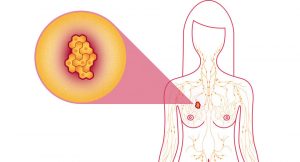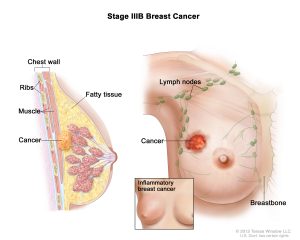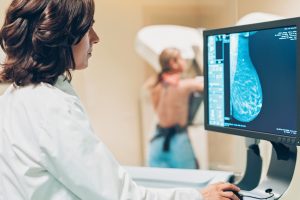Today, one of the most common diseases that play a leading role in the death of women is breast cancer. To estimate how breast cancer can develop within a year or so is very difficult. There are different types of breast cancer that can grow at a variety of rates and several factors can have a potential impact on its growth and chance of developing.

In this article, we take a look at how quickly breast cancer might develop, types, symptoms and different ways of treating patients using AI methods.
How fast does breast cancer grow?
Since breast cancer can affect each person differently, it is not an easy task to calculate exactly how fast it can develop. Breast cancer progression and its chance of spreading depends on several factors:
- Types of breast cancer
Breast cancer can be invasive and non-invasive. Non-invasive breast cancer will not spread beyond the connective tissues. On the contrary, invasive breast cancer will spread to the surrounding connective tissues and other areas of the body.
- Grades of breast cancer (1-3)
Doctors will grade breast cancer from 1 to 3. Grade 1 is a slower-growing cancer and grade 3 is a faster-growing cancer. A higher grade means this type of cancer is more likely to grow faster and spread to other parts of the body.
- Stages of breast cancer (0-4)
Doctors put breast cancer progression in the category of 0-4 stages. This categorization is a substantial factor for making decisions when you are treating the patients.
Stage 0. Non-invasive. only present in the ducts or the lobules.
Stage 1. Invasive,small and near the primary site.
Stage 2. Invasive, tumors may be larger than in stage 1, and the cancer may have spread to the lymph nodes.
Stage 3. Invasive, tumors may be larger, and cancer has spread to the lymph nodes, possibly to several. Breast cancer at this stage has not spread to other organs.
Stage 4. Breast cancer has developed in other areas of the body outside the breast and lymph nodes, often in the bones, lungs, brain, or liver.

Stage 4 cancer that has already spread to other areas of the body is more likely to spread faster.
Personal factors
American Cancer Society estimates about the 5-year survival rates for people at different stages of breast cancer. Breast cancer growth within a year will often depend on personal factors, including:
- age at diagnosis
- hormone status
- family history of breast cancer
- exposure to alcohol, cigarettes, or pollution
- previous history of cancer
Signs and symptoms of breast cancer
According to Centers for Disease Control and Prevention (CDC), some people with breast cancer experience no symptoms at all. But people with breast cancer may experience a range of symptoms, but not all people will experience the same symptoms. Some signs and symptoms of breast cancer include:
- a lump or mass in the breast tissue
- pain, swelling, or redness on any part of the breast
- dimpling of the skin covering the breast
- unusual nipple discharge
- flaking skin on or near the nipple
- change in the shape or size of the breast
Detection
Several standard screening techniques are used for early detection of breast cancer such as Mammography, Thermography, Biopsy and self-examination.
Mammography: a breast cancer screening technique consisting of low-dose x-rays of the compressed breast. Clinical organizations recommend having mammograms every year beginning at age 40.
Thermography: Thermal infrared images are used to detect lesions in breasts. These Thermograms detect the temperature of the different regions of the breast. Regions with warmer temperature are more likely to contain tumors than a normal tissue.
Biopsy: This is a procedure that involves removing a sample of tissue from the breast for further examination.
Self-examination: Before women can experience any signs of cancer such as lumps or tumors, they can diagnose it with self-examination. This method can also help women to find breast diseases such as a lump, pain or nipple discharge.

Treatment
Breast cancer treatment plans depend on the type and stage of the cancer, as well as a person’s overall health status and their personal preferences. Treatments for breast cancer are either local or systemic.
Local treatment: remove cancer in a particular area of the body
Systematic treatment: destroy cancer throughout the body.
The AI Talos breast screening app provides women with access to an online breast cancer screening tech for early detection. Please visit www.aitalos.com for more information. Early detection can save your life.